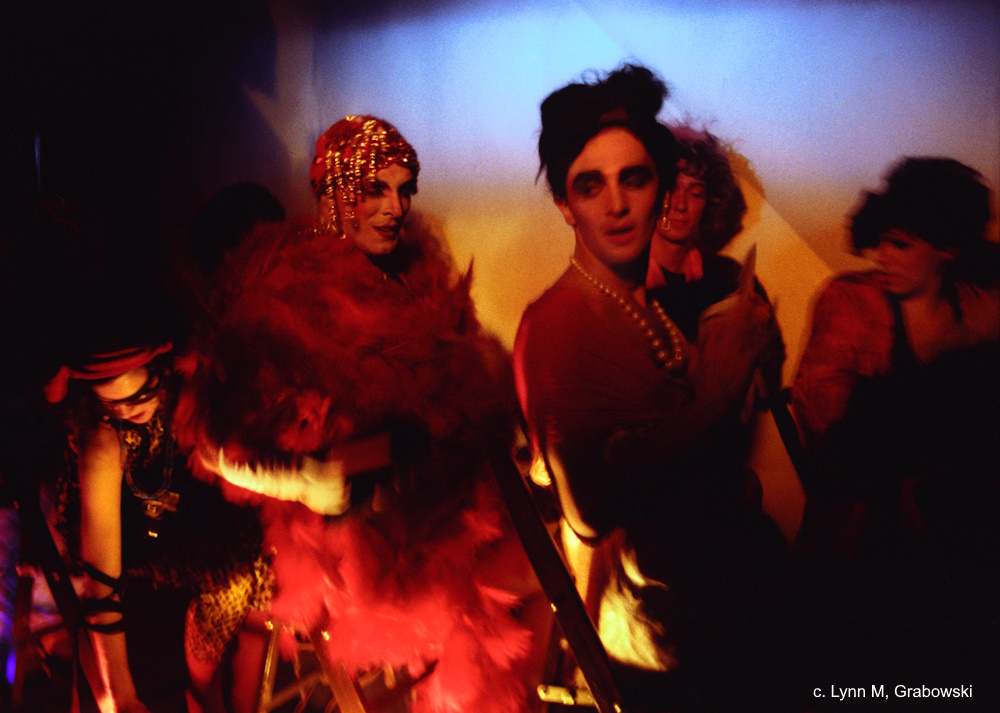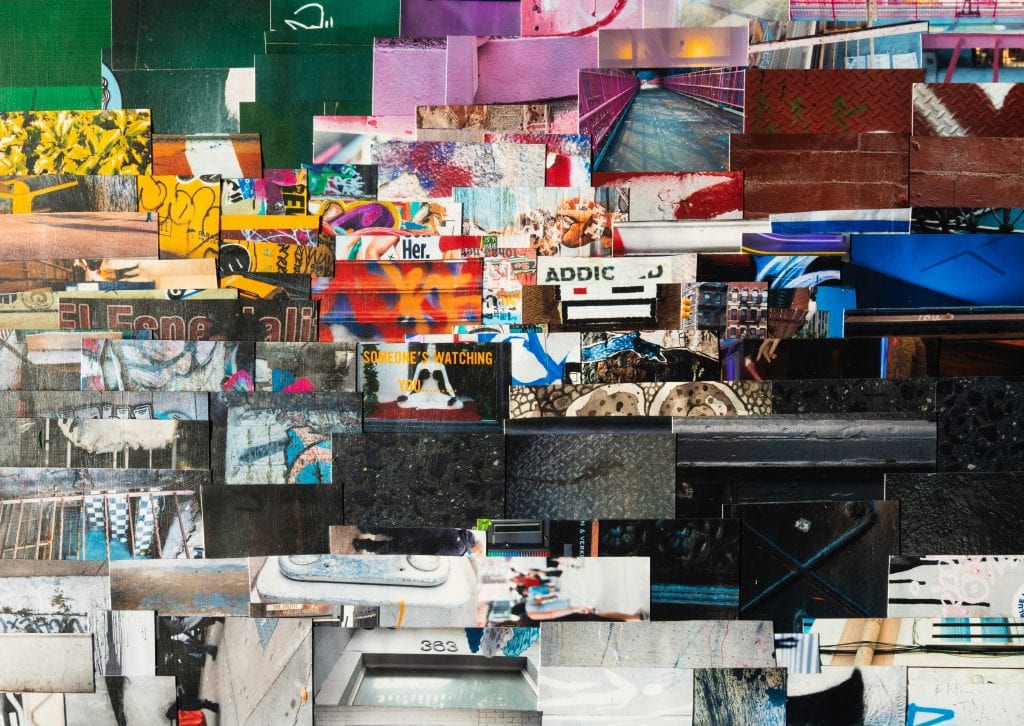Click Here to view the catalog for Linus Coraggio’s Ramifications.
I first encountered the work of Linus Coraggio in the summer of 1984 at Avenue B Gallery in the East Village. With his scrap-metal “3-D graffiti” and cartoony welded-steel constructions, the young artist’s work built upon the first wave of E.V. street art, with a heavy metal twist. His tumbling tenement buildings echoed Looney Tunes caricatures and Gaudi’s undulating architecture; his steel-and-barbwire Berlin Wall parody was fraught with political angst and was also an innovative wall-work. Irreverent as they were, I was most struck by the thought and skill of their fabrication.
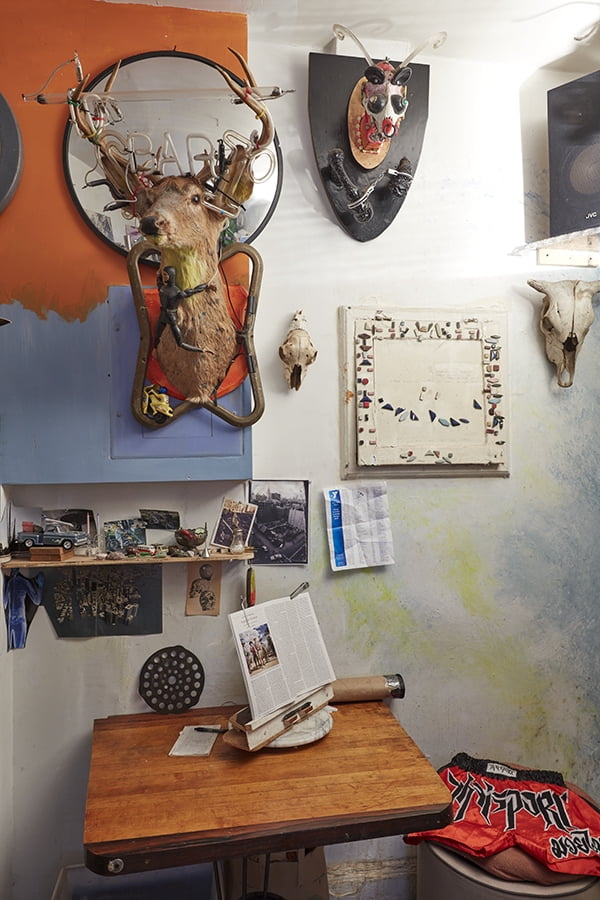
The artist found larger inspiration and notoriety as a founding member of the Rivington School. Coraggio and sculptors Ray Kelly and Robert Parker were most responsible for creating the bulwark of the sprawling steel-and-debris phoenix that arose from the rubble of a vacant lot on Rivington Street, later added to by dozens of known and unknown artists—(including Jean-Michel Basquiat—), demarcating a kind of “temporary autonomous zone” that became the locus of an alternative Lower East Side culture, which thrived into the mid-90s. (The “sculpture garden” itself would go through three different dislocations and reconstructions, and Linus was instrumental in all of them.) Coraggio also exhibited frequently at the three small storefront art spaces on Rivington: Freddy the Dreamer, Nada, and No Se No.
Following the “style wars” of the graffiti writers, the Rivington School artists became as notorious for their “trash or be trashed” ethic as for their kitchen-sink trash aesthetic, but the scrap-metal style which was their hallmark quickly attracted international attention (and imitators), especially in Japan, Finland, Italy, and Germany. In 1986, Coraggio and other Rivington artists opened Space 2B at an abandoned gas station in the East Village, hosting hundreds of performances, and doubling as Coraggio’s showroom. Its vast scrap and steel “fence” also elicited international celebrity. In 1991, PS1 invited Coraggio and the others to construct a miniature Rivington sculpture garden.
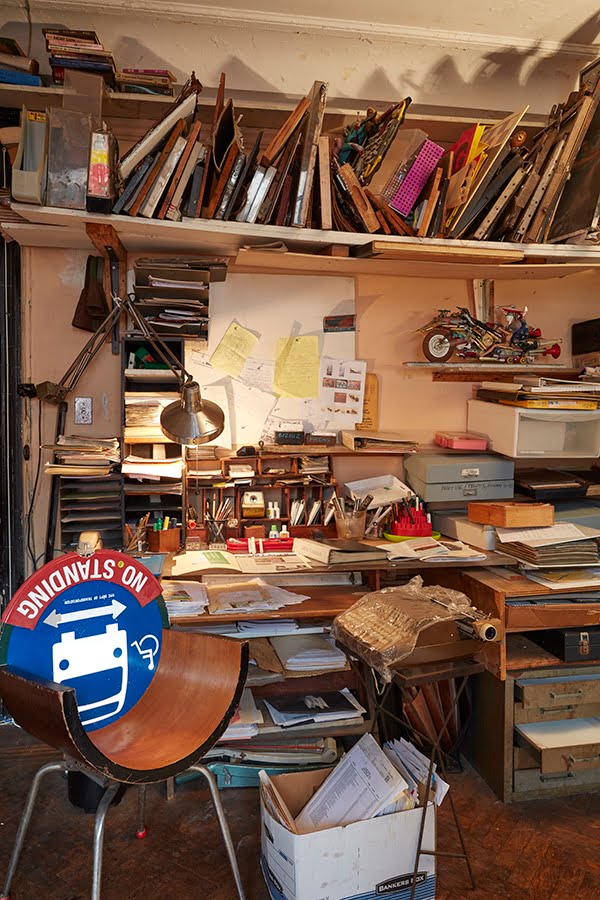
At 2B, Coraggio began to create his signature welded steel-and-scrap furniture, particularly the unique, oddly -shaped chairs, that exuded East Village edge and formal virtuosity. Novelist Joyce Carol Oates called one of his chairs “witty, weighty, and almost comfortable; [it] exerts an iron will and dares you to be equal to it,” noting “it descends from Duchamp and the assemblage sculptors of the early 20th century.” At 2B, he also started a series of trademark “chopper” sculptures, letting the materials and his imagination run wild. Coraggio has recently created one-of-a-kind chess sets with imaginatively welded pieces. (I daresay Duchamp would have approved.)
Though he adamantly walks the line between utilitarian, decorative, and the deliberately provocative, Coraggio’s more abstract welded collage works are his most aesthetically engaging, and spotlight the artist’s full powers. Away from the impersonal junk beacon on Rivington, Coraggio began to hone his individual sculptural chops, executing smaller, unified abstract constructions, always centering on an armload of well-chosen found artifacts. Coraggio’s approach to scrap metal is almost mystical: “ I think to a minor degree that certain metal junk has a soul or at least some kind of quirky historical continuum…that inspires me and motivates me to use it as my main medium.”
Years of studio- and scrap-metal experience have sharpened his welder’s touch and finder’s eye—and Coraggio’s most recent abstractions bend space and perspective in sometimes startling ways—yet their object choices continue to evince his wry humor and irreverence (which may have lightened somewhat, along with his touch). At his best these constructions recall the found-metal alchemy of Picasso’s sculpture (such as the famous bicycle-seat-and-handlebar Bull’s Head), Picabia, and the spatial wizardry of such modernist masters of welded metal sculpture, like Julio González and especially David Smith. His frequent incorporation of utilitarian objects evokes Pop sculptors such as Oldenberg or Dine. His eye for metal collage puts him in the company of Rauschenberg’s steel assemblages, some of Chamberlain’s sculpture—most notably in this exhibition, the car-headlights chandelier—and contemporaries like Robert Parker.
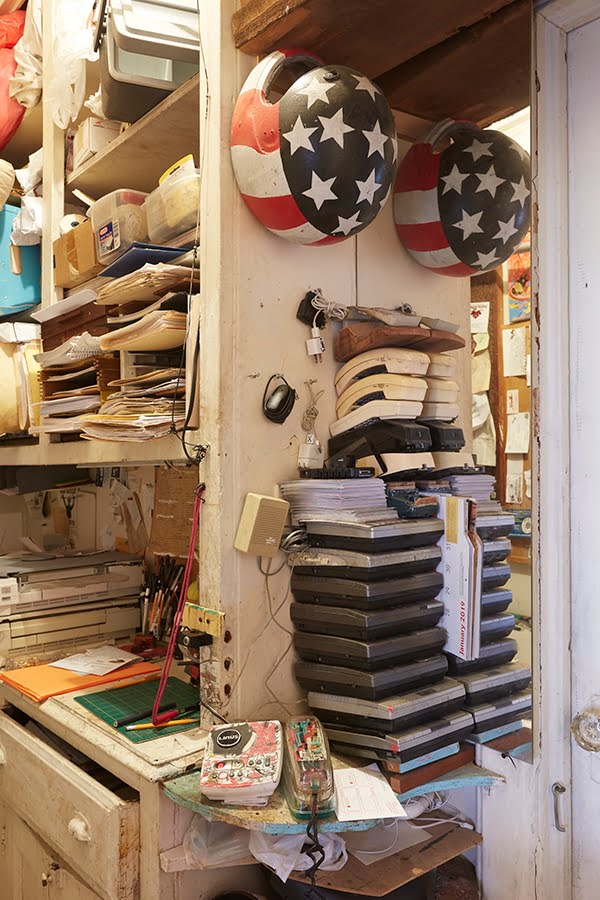
Although visual art—specifically painting (or whatever that means), especially street or graffiti-inspired art—has always been a focus of his work, in the last decade Linus has created a plethora of graf-based, abstract, yet quite painterly canvases and tondos, which blend elements of psychedelia and ab-ex artists such as de Kooning and Still. While he has long collaborated with other artists, especially the stone sculptor Ken Hiratsuka (a fellow Rivington School artist), Kevin Wendall (aka FA-Q), DJ Spooky (aka Paul Miller), and Richard Hambleton (who also lived on Rivington), recently he has worked with many others of the street-art scene, including Aldo Díaz (the partner in Samo® with Basquiat), Alfredo Martínez, Stefan Eins of Fashion Moda, Chris Chambers of the street-art collective Avant, the noted wag Anthony Haden-Guest, and artist-photographers such as Curt Hoppe and M. Henry Jones; and performers like Kembra Pfahler.
Regardless whether he puts his torch to abstraction or figuration, Coraggio’s output has established him as one of the premier scrap-metal sculptors in New York, if not the world. (In the realm of scrap metal he has few peers.) His metal-collaged objects evidence the transmutation of dross materials into sculpture of serious beauty (and sometimes functionality), while retaining a strong whiff of the youthful artist’s smirking humor. Coraggio’s redeployment of found objects connects him with two of the richest veins of 20th century art, which continue to pulse into the 21st: assemblage and welded steel sculpture. Impressive as they are, these objects evidence the development of an artist whose vision will widen as the scope of his projects becomes more challenging, whose touch will continue to lighten and transfigure the heaviest of metals into works of rare wonder.


